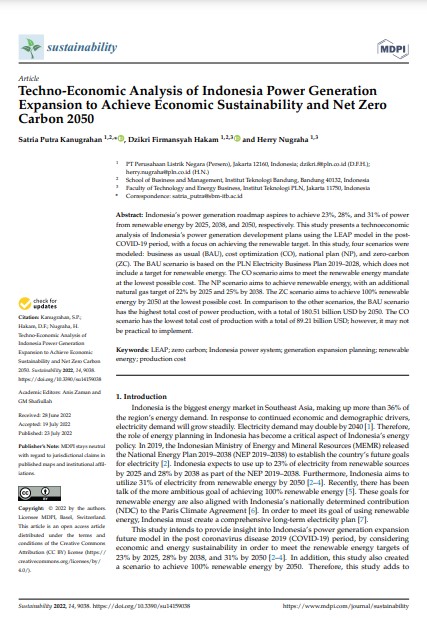
Keyword(s)
Author(s)
1,2) Satria Putra Kanugrahan, 1,2,3) Dzikri Firmansyah Hakam, 1,3) Herry Nugraha
Country(ies)
Publisher
Published Date
Access
DOI
Indonesia’s power generation roadmap aspires to achieve 23%, 28%, and 31% of power from renewable energy by 2025, 2038, and 2050, respectively. This study presents a technoeconomic analysis of Indonesia’s power generation development plans using the LEAP model in the post-COVID-19 period, with a focus on achieving the renewable target. In this study, four scenarios were modeled: business as usual (BAU), cost optimization (CO), national plan (NP), and zero-carbon (ZC). The BAU scenario is based on the PLN Electricity Business Plan 2019–2028, which does not include a target for renewable energy. The CO scenario aims to meet the renewable energy mandate at the lowest possible cost. The NP scenario aims to achieve renewable energy, with an additional natural gas target of 22% by 2025 and 25% by 2038. The ZC scenario aims to achieve 100% renewable energy by 2050 at the lowest possible cost. In comparison to the other scenarios, the BAU scenario has the highest total cost of power production, with a total of 180.51 billion USD by 2050. The CO scenario has the lowest total cost of production with a total of 89.21 billion USD; however, it may not be practical to implement.